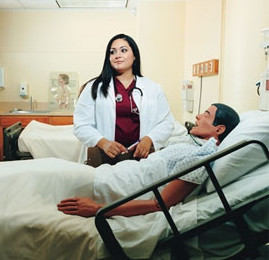I finished my last locum tenens assignment in October. My partner moved to the USA in December so my priority has been getting him situated. I planned on us being in Miami for 2 months so we could spend time with my family and friends for the holidays. I rented a mid-term rental in Brickell/Downtown Miami because it is walkable. I figured that would make the transition easier since he is used to that coming from Europe. Then I was going to take a locum tenens assignment possibly in my favorite place, San Diego, CA.
However, it has been a bigger adjustment for my partner to move here than we expected. So, he would like to stay in Miami a few months longer. He would like to get more comfortable with driving here, as he never really drove in Europe since public transportation is convenient there. I am so used to moving and living in different places, that I forgot it can be a challenge to live somewhere new.
In the meantime, I have been working telemedicine part-time. This has allowed for greater flexibility. I can make the same amount I make working as a locums tenens NP full-time, as a part-time telemedicine NP. The only difference is my housing and rental car is not covered. It makes me wonder if it is worth going back to being a travel NP – if I can make double the income doing telemedicine, and/or work less.
The thought of traveling and living in new places still interests me. I supposed I can always just get a mid-term rental and pay for it myself, while working in telemedicine in a new state. Although telemedicine is easier than working in clinic, it still has its challenges. It drains me to tell patients again and again that they do not need antibiotics after being sick for 1 day; and having to deal with angry patients who think seeing a telemedicine provider is like going to McDonalds and they can order whatever they want from the menu.
I do miss working in clinic sometimes because at least there is more complexity. Vs in telemedicine I am doing simple visits such as UTI’s, erectile dysfunction, cold symptoms, and birth control, etc. It can get tedious. I also want to keep my “hands-on” experience. I believe after working in telemedicine only for 2 years it may be difficult to get an in-person job.
So, I am at a crossroads. I will have to continue working telemedicine for now, and I think at a minimum I will pick up at least one 3-month locums assignment this year.
Would you rather work part-time in Telemedicine and pay for your own housing and car for the equivalent pay of working full-time in clinic? Or would you rather work full-time as a Traveling NP and have your housing and car covered? Not to mention free travel…
Like this:
Like Loading...









